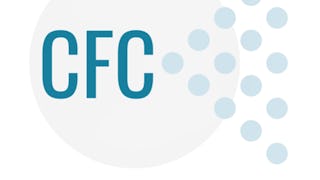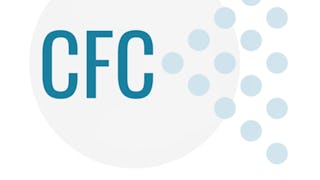In this course, you will learn how to lead and facilitate an effective cross-functional collaboration. You will learn facilitation techniques, ways of structuring collaboration, tactics for turning a group of individuals into a team and selecting the right process for product development for co-located, distributed, and hybrid teams.


Facilitating and Leading Cross-Functional Collaboration
本课程是 Cross-Functional Collaboration 专项课程 的一部分

位教师:Oxana Trotsenko
包含在 中
您将学到什么
Master cross-functional collaboration, set product goals, run empathy workshops, create team spaces, and choose the best agile framework for success
您将获得的技能
- Business Priorities
- Cross-Functional Team Leadership
- Team Building
- Conflict Management
- Team Management
- Empathy
- Collaboration
- Continuous Improvement Process
- Product Management
- Cross-Functional Collaboration
- Discussion Facilitation
- Product Development
- Goal Setting
- Team Motivation
- Leadership
- Product Roadmaps
- Meeting Facilitation
要了解的详细信息

添加到您的领英档案
27 项作业
了解顶级公司的员工如何掌握热门技能

积累特定领域的专业知识
- 向行业专家学习新概念
- 获得对主题或工具的基础理解
- 通过实践项目培养工作相关技能
- 获得可共享的职业证书

该课程共有5个模块
Leader and a facilitator roles set the tone of cross-functional collaboration. They either help the team do their best thinking or they hinder the progress. In this module, you will learn the difference between being a leader and a facilitator. You will also learn how you can help the cross-functional team overcome the most common collaboration anti-patterns depending on the role you play.
涵盖的内容
4个视频3个作业
Working with various leaders throughout the years, I have noticed that the skill of facilitation is grossly undervalued. Wouldn’t a leader want to know how to help a team do their best thinking or how to help the team get out of a gridlock of thoughts and ideas? A concept of servant leadership alludes to the idea that a leader is the one who helps unlock the talent, creativity and the potential of the team. Facilitation in that sense is a practical skill of serving others, helping teams find cohesion, come up with innovative solutions, challenge their own thinking and maximize customer value. In this module, you will learn how teams think so you can be prepared for the psychological depth and emotional range of working with groups of individuals. You will learn how to structure, organize, and facilitate three essential phases of any workshop: preparation, facilitation, and a follow-up.
涵盖的内容
5个视频4个作业
Collaboration exists for a specific purpose - to deliver desired business outcomes. Because of that, leadership always seeks to understand answers to the most common business questions - what the solution is, when it will be delivered, how much it will cost, and how much revenue it will generate. A cross-functional team must be aware of these questions and be ready to answer them or have a structured way of addressing them. In this module, you will learn ways of addressing these questions even early in the process when your team might not have an idea of what the solution will be yet. Collaboration without structure can quickly turn into chaos. To prevent this from happening, we need to address four things. First, remember what business outcomes we are trying to achieve. Second, add light structure and definition of roles and responsibilities. Third, understand how people inside and outside of the organization may impact your work, and lastly, be clear about the product vision, goal, and how we are going to deliver it. As you continue working though this module, you will learn how to address these four elements. By the end of the module, you will be equipped with tools and techniques for creating shared understanding and team alignment around the problem, vision, goals, success measures, and creating an objectives-based roadmap of the work ahead.
涵盖的内容
13个视频6篇阅读材料11个作业
Every team goes through a variation of Bruce Tuckman’s forming-storming-norming-performing journey. The pace with which people travel through that journey varies greatly, but most importantly, we can assist a set of individuals in becoming a true team. In this module, you will learn tools and techniques that will help expedite team bonding by cultivating empathy, proactively discussing common values, working agreements, bringing potential conflicts out in the open early in the collaboration process, creating collaboration space and enabling a culture of continuous improvement in co-located and distributed teams.
涵盖的内容
5个视频1篇阅读材料6个作业
So far we discussed interpersonal team dynamics, roles and team structure, and how to align team members around the product vision, goals and product delivery. The last topic of discussion is the team process. Or, in other words, how exactly the team will be delivering its work. By the end of the module, you will learn what key principles you should consider as you assist the team with finding the right process for them in the context of product development lifecycle.
涵盖的内容
2个视频1篇阅读材料3个作业
获得职业证书
将此证书添加到您的 LinkedIn 个人资料、简历或履历中。在社交媒体和绩效考核中分享。
位教师

从 Leadership and Management 浏览更多内容
 状态:免费试用
状态:免费试用University of Colorado System
 状态:预览
状态:预览Starweaver
 状态:免费试用
状态:免费试用University of Colorado System
 状态:免费试用
状态:免费试用University of Colorado System
人们为什么选择 Coursera 来帮助自己实现职业发展




常见问题
To access the course materials, assignments and to earn a Certificate, you will need to purchase the Certificate experience when you enroll in a course. You can try a Free Trial instead, or apply for Financial Aid. The course may offer 'Full Course, No Certificate' instead. This option lets you see all course materials, submit required assessments, and get a final grade. This also means that you will not be able to purchase a Certificate experience.
When you enroll in the course, you get access to all of the courses in the Specialization, and you earn a certificate when you complete the work. Your electronic Certificate will be added to your Accomplishments page - from there, you can print your Certificate or add it to your LinkedIn profile.
Yes. In select learning programs, you can apply for financial aid or a scholarship if you can’t afford the enrollment fee. If fin aid or scholarship is available for your learning program selection, you’ll find a link to apply on the description page.
更多问题
提供助学金,



